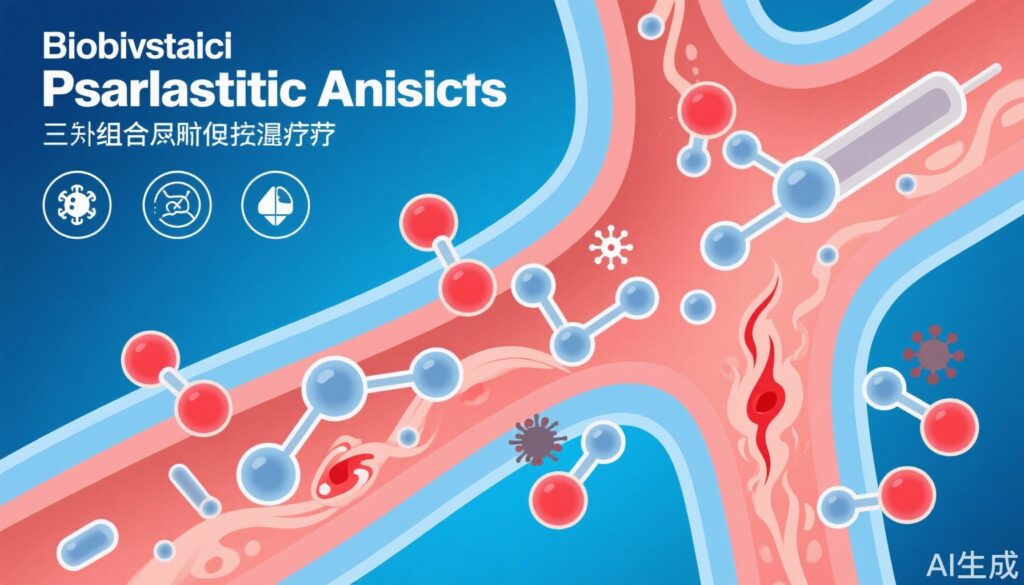Highlight
1. Approximately 1% of adults with psoriatic arthritis (PsA) receive combination targeted therapies, primarily combining biologics with apremilast.
2. The most frequent treatment combinations were tumor necrosis factor (TNF) inhibitors with apremilast and interleukin 17 (IL-17) inhibitors with apremilast.
3. Serious infection incidence rates in patients on combination therapies ranged from 7.38 to 15.00 events per 1000 patients, with no significant increased risk compared to standard therapy.
4. Opportunistic infections requiring hospitalization were rare and not significantly higher in combination therapy cohorts.
5. Findings suggest combination targeted therapy in PsA can be safe concerning infection risk, although larger studies are needed to confirm these results.
Study Background and Disease Burden
Psoriatic arthritis (PsA) is a chronic immune-mediated inflammatory disease characterized by arthritis, enthesitis, dactylitis, and skin and nail psoriasis. It significantly impairs patients’ quality of life due to joint damage, pain, and disability. Achieving optimal disease control remains a clinical challenge due to heterogeneous disease manifestations and variable therapeutic responses.
Targeted systemic therapies, including biologics such as TNF inhibitors, IL-17 inhibitors, and small molecules like apremilast, have revolutionized PsA management. However, monotherapy is insufficient for some patients, leading to consideration of combination targeted therapy to improve outcomes by simultaneously modulating distinct inflammatory pathways.
While combination biologic therapies have demonstrated efficacy with manageable safety profiles in other immune-mediated diseases such as rheumatoid arthritis, data remain limited for PsA. Infection risk is a critical safety concern given the immunosuppressive nature of these agents. This study addresses the knowledge gap regarding the prevalence of combination targeted therapy and the associated risk of serious and opportunistic infections requiring hospitalization among adults with PsA.
Study Design
This retrospective cohort study utilized data from the IBM MarketScan Commercial Claims Database covering January 2015 to December 2024. The database includes de-identified health claims for individuals with commercial insurance across the United States, facilitating large-scale, real-world observational analyses.
Adults diagnosed with PsA were identified using a validated claims algorithm based on International Classification of Diseases, Tenth Revision (ICD-10) codes. Two cohorts were formed: patients receiving combination targeted therapy for ≥3 months and those on standard therapy (monotherapy or non-combination treatment). The control cohort was matched 2:1 to the combination therapy group using propensity scores to balance baseline characteristics.
Primary outcomes included descriptive analyses of combination targeted therapy usage patterns and safety analyses comparing serious and opportunistic infections requiring inpatient care, identified via ICD-10 codes. Relative risks (RRs) were calculated before and after propensity score matching to evaluate infection risks associated with combination therapies compared to standard treatment.
Key Findings
Of 82,399 adults with PsA, 542 were on combination targeted therapy for 3 consecutive months and 200 for 6 consecutive months. The median age was in the early-to-mid 50s, with a higher proportion of female patients (~60%).
Usage Patterns: The most common combination therapies were TNF inhibitors paired with apremilast (34%-37%) and IL-17 inhibitors combined with apremilast (27%-29%). This reflects a preference for combining biologic agents targeting different pathogenic pathways, potentially to enhance efficacy.
Infection Risk: The incidence of serious infections requiring hospitalization ranged from 7.38 to 15.00 events per 1000 patients in the combination therapy cohorts. Opportunistic infections were rare, with rates ranging from 0 to 1.85 events per 1000 patients.
Compared with the standard therapy group, propensity score–matched analyses revealed no statistically significant increase in the risk of serious infections at 3 months (RR 0.53; 95% CI, 0.17–1.63) or 6 months (RR 1.50; 95% CI, 0.34–6.65). Similarly, no significant difference was observed in opportunistic infections (RR 1.00; 95% CI, 0.09–11.02 at 3 months; not applicable at 6 months due to sparse events).
These findings suggest that combination targeted therapy in PsA does not confer a clinically meaningful increase in serious or opportunistic infection risk compared to standard care.
Expert Commentary
The study provides valuable real-world insights into the relatively low prevalence but diverse use of combination targeted therapies in PsA and addresses a critical safety question about infection risks. Notably, the results align with experiences in related immune-mediated diseases where combination biologic therapy has been cautiously explored.
However, some limitations warrant consideration. Claims data lack granular clinical details such as disease activity, severity, and concomitant medications like corticosteroids, which can influence infection risk. The relatively small number of patients on combination therapy and low event rates limit power to detect rare adverse events. Additionally, the follow-up periods of 3 and 6 months may not capture long-term safety concerns.
Clinicians should weigh potential benefits against risks on a case-by-case basis, and these findings support cautious but informed consideration of combination therapy in refractory PsA. Further prospective studies with larger cohorts and longer follow-up are essential to confirm these results and refine patient selection criteria.
Conclusion
This large claims-based cohort study demonstrates that approximately 1% of commercially insured adults with PsA receive combination targeted therapy, most commonly combining TNF or IL-17 inhibitors with apremilast. Importantly, this study found no significant increase in serious bacterial or opportunistic infections requiring hospitalization compared to standard monotherapy or non-combination treatments over short-term follow-up.
These findings are reassuring regarding the infection safety profile of combination targeted therapies but should be interpreted with caution due to limitations inherent in claims data and sample size. The research highlights the need for larger, prospective studies to evaluate long-term efficacy and safety comprehensively. Until then, clinicians should continue individualized risk-benefit discussions when considering combination biologic or targeted small molecule therapy in PsA.
References
Wu A, Zhang A, Guo Y, et al. Comparative Risk of Infection and Prevalence of Combination Targeted Therapy in Psoriatic Arthritis. JAMA Dermatol. Published online August 20, 2025. doi:10.1001/jamadermatol.2025.2980
Singh JA, Guyatt G, Ogdie A, et al. 2018 American College of Rheumatology/National Psoriasis Foundation guideline for the treatment of psoriatic arthritis. Arthritis Rheumatol. 2019;71(1):5-32. doi:10.1002/art.40726
Gossec L, Baraliakos X, Kerschbaumer A, et al. EULAR recommendations for the management of psoriatic arthritis with pharmacological therapies: 2019 update. Ann Rheum Dis. 2020;79(6):700-712. doi:10.1136/annrheumdis-2019-215894
Mease PJ, Gladman DD. Combination therapy in psoriatic arthritis: current and future perspectives. Arthritis Res Ther. 2020;22(1):73. doi:10.1186/s13075-020-02154-x



